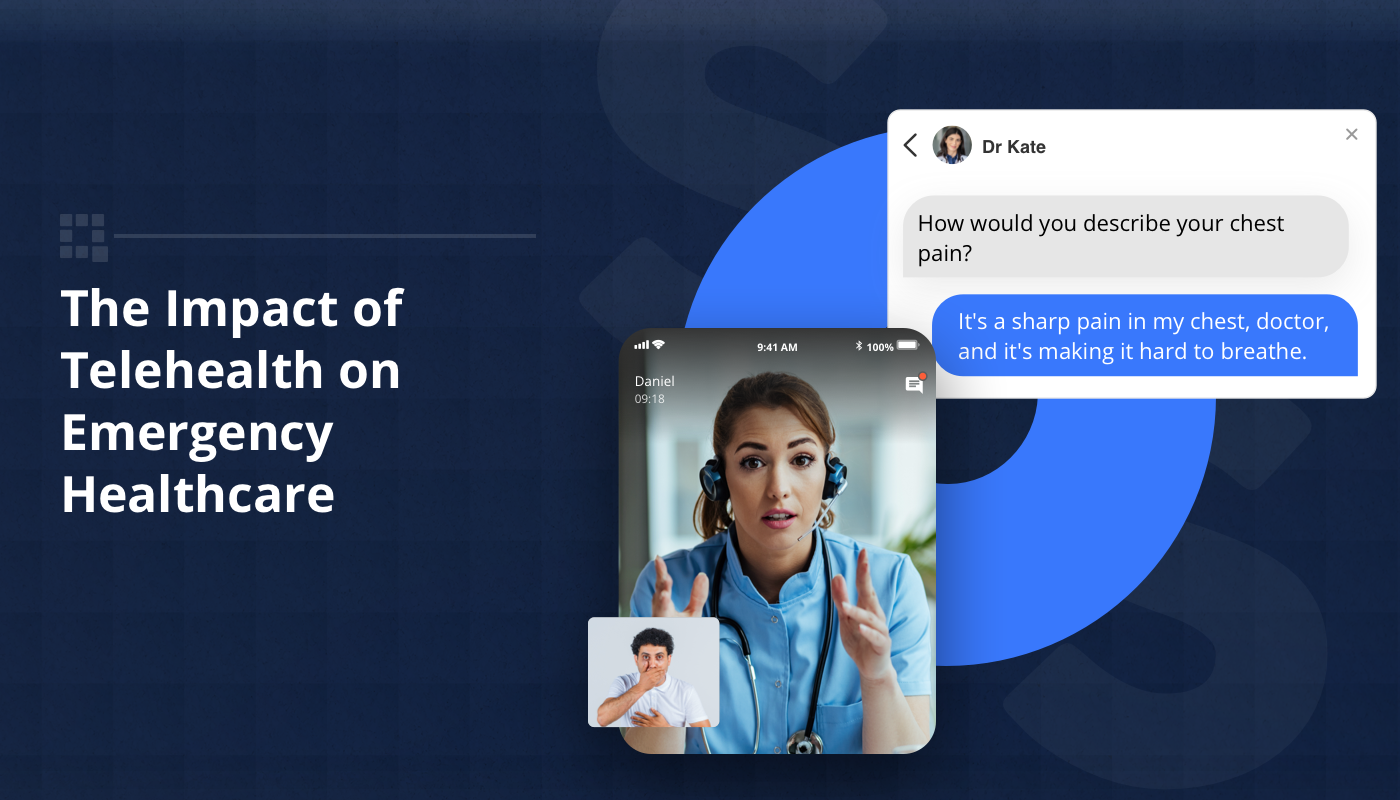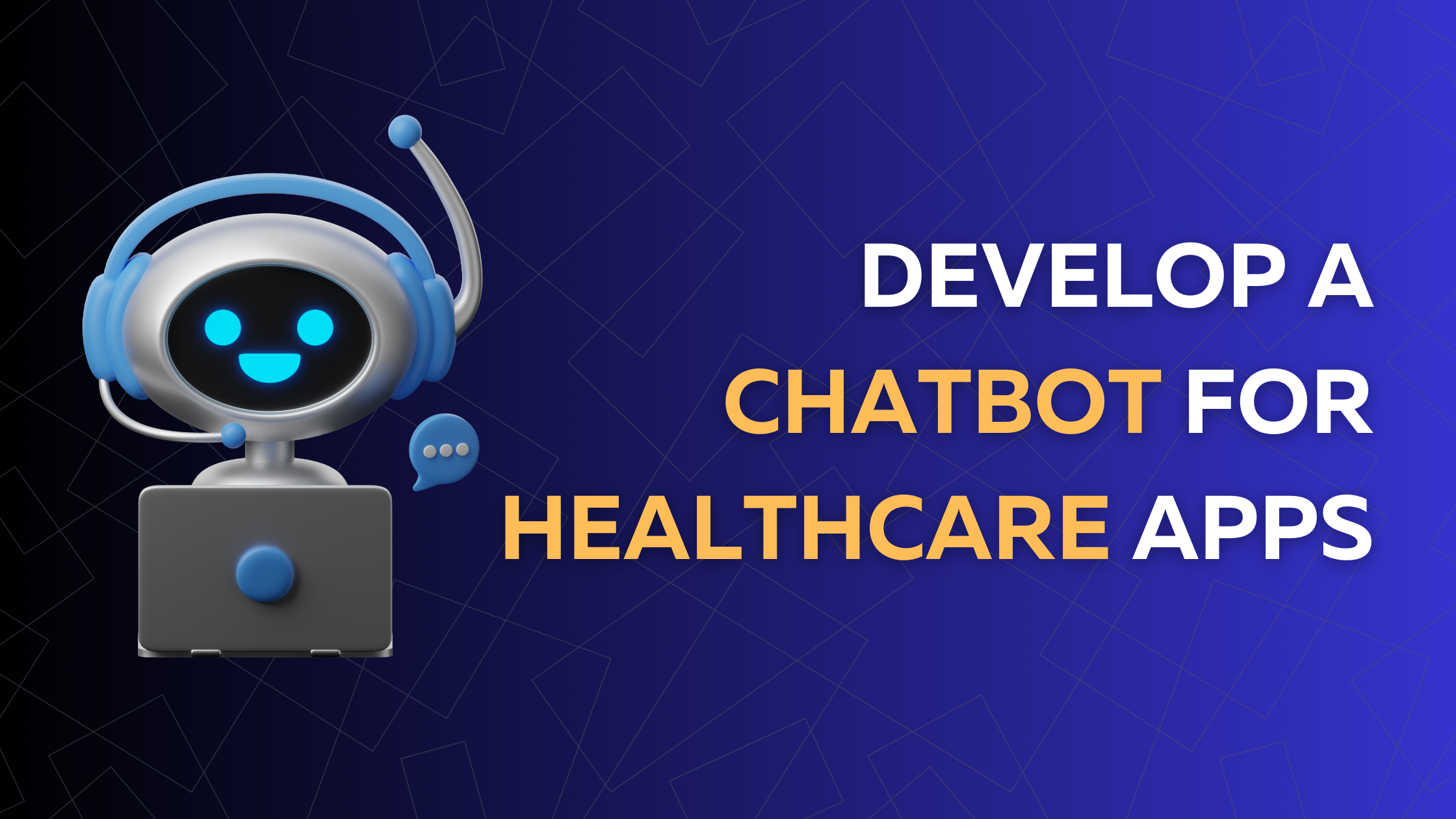
Summary: In this blog post, we’ll explore the different ways telehealth is being leveraged in emergency care. We will consider its many advantages with its potential to improve access and reduce costs, highlight some of its challenges, provide some real-world examples, and suggest how it can evolve.
Table of Contents
Introduction
Imagine experiencing a sudden and concerning medical issue, but instead of having to trek over to a crowded emergency waiting room, you stay put and connect virtually with a healthcare professional from the comfort of your home. Through online medical triage, the doctor can assess the seriousness of your condition and recommend whether or not you need to attend the emergency room (ER) at all. Such a scenario is becoming more commonplace across the United States, as healthcare professionals and organizations are increasingly adopting telehealth solutions in urgent care settings. The Chair of the American College of Emergency Physicians, Aditi Joshi, M.D, recently stated: “Emergency medicine doesn’t take place in one spot in the hospital and emergency physicians are trained to take care of emerging acute care situations in any setting,” including telehealth.
In this blog post, we’ll explore the different ways telehealth is being leveraged in emergency care, and consider its many advantages and challenges.
What is Telehealth Urgent Care?
The term “telehealth urgent care” describes the delivery of emergency medical services remotely, usually via secure messaging apps, phone calls, or video calls. It’s a convenient way to get medical care quickly, especially for non-life-threatening problems, because it enables individuals to consult with doctors without physically going to a clinic or hospital.
This method can be especially helpful for minor ailments or injuries that don’t need to be treated in person at a medical facility. It can also help cut down on pointless ER trips and increase access to treatment, particularly in underprivileged or rural areas.
The Department of Health and Human Services has highlighted 5 ways that telehealth services can be utilized by emergency departments:
1. “Tele-Triage”: Tele-triage is like triage but conducted remotely with the help of technology. It’s essentially a screening process to assess a patient’s health condition and determine the most appropriate level of care they need.
2. “Tele-emergency care: Tele-emergency care uses video conferencing or other telehealth tools to create a link between central hub hospitals with extensive resources and medical staff in remote locations. This allows doctors in smaller facilities to consult with specialists and provide better care for their patients, even in critical situations.
3. “Virtual rounds”: Telehealth can facilitate virtual rounds in emergency care settings. Virtual rounds minimize the number of healthcare providers physically entering a patient’s room, especially crucial for isolating contagious patients or reducing unnecessary exposure during outbreaks. Furthermore, remote specialists, nurses, and other healthcare professionals can join virtual rounds, offering a broader range of expertise for complex cases.
4. “E-consults”: E-consults allow doctors to consult with specialists remotely, expediting diagnosis and treatment plans without delays related to location.
5. “Telehealth for follow-up care”: Telehealth offers a powerful tool for follow-up care for patients who were both triaged but not admitted to the emergency department and for those who attended and then were discharged from in-person emergency care. This form of care can help improve patient outcomes whilst reducing strain on healthcare systems.
Benefits of Telehealth in Emergency Healthcare
Telehealth offers a range of exciting possibilities for improving emergency healthcare delivery. Here are some of the key benefits:
Improved Access to Care: The capacity of telehealth to overcome geographic obstacles is one of its most important benefits. Patients can now consult with medical specialists promptly even if they live in rural areas or have restricted access to transportation. This is particularly important when there is an urgent need for medical assistance but getting to the emergency room could be difficult.
Patients with chronic illnesses or restricted mobility who would find it difficult to physically visit an ER in an emergency can also benefit from telehealth. An initial evaluation can be obtained through a virtual consultation, which could reduce the need for unnecessary trips to overcrowded waiting rooms. For example, during the height of the Covid-19 pandemic virtual urgent care provided a “pragmatic strategy” to care for an unprecedented number of contagious patients.
Faster Triage and Treatment: In emergency scenarios, telehealth consultations can speed up the triage procedure. By connecting with a doctor virtually, patients can explain their symptoms and receive preliminary assessments faster. This may result in quicker treatment decisions and interventions, which could enhance patient outcomes. Telehealth consultations can even provide initial treatment plans, such as prescribing medications or recommending home care instructions.
Enhanced Specialist Availability: Emergency room staff can communicate with remote specialists using telehealth. This can be especially helpful in circumstances when a specific expertise is required but might not be easily obtained on-site. For example, a patient experiencing a complex neurological issue can be virtually connected with a neurologist for a more informed diagnosis and treatment plan. Better patient care may result from this collaboration between geographically dispersed specialists.
Reduced Costs: Telehealth can potentially reduce healthcare costs for both patients and the healthcare system. Patients can avoid the expense of ambulance transportation and potentially lengthy ER stays for non-critical emergencies. For the healthcare system, telehealth consultations might be less expensive than in-person visits, freeing up resources for more critical cases.
The use of tele-triage plays a critical role in reducing costs by goalkeeping patients from hospital visits who don’t really need them. Dr. Kathy Li, Acting Instructor at the University of Washington’s Department of Emergency Medicine, states that tele-triage “is really about talking patients through a risk-benefit calculation about whether they should go to an emergency department.”
Dr Li was involved with a study about the effectiveness of telehealth emergency care. The study found that veterans who participated in a new tele-emergency program showed a significant decrease in emergency department visits, being only half as likely to need in-person care at a VA emergency room. The decreased number of hospital visits potentially reduces strain on healthcare resources associated costs.
Challenges of Telehealth in Urgent Care
Despite its potential, telehealth in emergency healthcare also faces some challenges that while not insurmountable, still need to be addressed.
Diagnostic Limitations: Telehealth consultations lack the ability to perform a thorough in-person physical examination, which can be critical for diagnosing certain medical conditions.
Remedy: Development in technology is widening the parameters of what is possible in remote examinations, with doctors increasingly utilizing tools like digital stethoscopes, otoscopes, and ophthalmoscopes. Ultimately, organizations need to develop clear guidelines for telehealth providers to identify situations where an in-person visit is necessary.
Technology Availability and Access: For telehealth to be successful, both patients and healthcare providers need access to reliable technology and a stable internet connection. However, disparities exist in technology access across different demographics. Patients in low-income communities, rural areas, or older age groups might not have the necessary equipment or internet connectivity to participate in a telehealth consultation during an emergency.
Remedy: To counteract this discrepancy, large hospitals and clinics can implement programs to provide patients with low-cost or free tablets or smartphones pre-loaded with telehealth apps, as well as partner with libraries, community centers, and public clinics to offer telehealth services and equipment on-site. There have also been some initiatives to install telehealth kiosks in public spaces like pharmacies or grocery stores to provide broader access to technology for consultations.
Data Security and Privacy Concerns: Telehealth consultations involve transmitting sensitive patient data electronically. Security breaches or data leaks could have serious consequences for patient privacy.
Remedy: It is essential then that hospitals use telehealth platforms and service providers that adhere strictly to HIPAA regulations for data security and privacy. They also need to ensure that their own in-house security teams implement robust data security measures for handling sensitive information
Learn more about Key Considerations When Choosing a HIPAA Compliant Telehealth Platform
Regulatory and Legal Considerations: Telehealth implementation in emergency care is a relatively new concept, and legal and regulatory frameworks might not be fully in place in all regions.
Remedy: Healthcare bodies need to establish clear guidelines and regulations. This includes developing standardized protocols for telehealth consultations, ensuring data security compliance, and addressing licensing and reimbursement concerns. These measures will create a robust framework for the ethical and effective implementation of telehealth in emergency medicine.
Real-World Examples: Telestroke & Tele-UCI
Telestroke Programs
One successful example of telehealth implementation in emergency settings is the use of telestroke programs for stroke patients. Stroke is a time-sensitive medical emergency where immediate intervention can significantly improve patient outcomes. Telestroke programs allow emergency room doctors in rural or under-resourced hospitals to connect with neurologists remotely via video conferencing.
The neurologist can then assess the patient virtually, evaluate their symptoms, and recommend the most appropriate course of treatment. This can include prescribing clot-busting medication or recommending transfer to a specialized stroke center. Studies have shown that telestroke programs can significantly reduce the time it takes for stroke patients to receive critical treatment, leading to improved patient outcomes and reduced long-term disability.
Tele-ICU
For many rural hospitals, geographic limitations and a scarcity of critical care specialists pose significant challenges. This has led several to explore the option of telehealth, including tele-ICU (Intensive Care Unit) for their rural populations.
Hampton Regional Medical Center (HRMC) in South Carolina is one such example. HRMC recently celebrated the launch of its state-of-the-art Tele-ICU Unit. This innovative program, established through a partnership with larger medical facilities, brings advanced intensive care directly to HRMC patients 24/7 via telemedicine technology and means that all their patients receive the highest level of intensive care, regardless of location. As Cam Ulmer, a registered nurse who oversees the program noted, “We can now keep patients closer to home, with their families near, and still provide the critical care they need.” The availability of Tele-ICU “has been a blessing for this hospital, and for the whole community.”
The Future of Telehealth in Emergency Medicine
Despite some challenges, there are plenty of reasons why healthcare organizations would want to invest in telehealth for urgent care. Advancements in technology hold the key to addressing some of the current limitations. For example, the development of new technologies like wearable diagnostics and remote monitoring tools could revolutionize how doctors assess patients virtually. These tools will enable vital signs, blood oxygen levels, and even basic scans to be transmitted remotely during a telehealth consultation, improving the accuracy of diagnosis and treatment decisions.
The integration of telehealth with remote patient monitoring systems, can reduce the need for urgent healthcare in the future. Patients with chronic conditions could be monitored remotely through wearable devices, allowing for early detection of potential emergencies and facilitating timely intervention through telehealth consultations. This proactive approach could improve patient outcomes and potentially reduce the number of unnecessary ER visits. Early studies on this are promising.
Learn more about The Impact of the AI Revolution on Key Features in Telehealth Platforms
Conclusion
Telehealth has a clear role to play in the future of emergency healthcare. From improved access and faster triage to enhanced specialist consultations and potentially reduced costs, the benefits are undeniable. While challenges like diagnostic limitations and technological disparities need to be addressed, advancements in remote diagnostics and clear regulatory frameworks are paving the way for a more integrated future.
As telehealth in emergency medicine continues to evolve, secure and reliable communication solutions are paramount. Companies like QuickBlox offer HIPAA-compliant real-time communication tools that can be seamlessly integrated into telehealth platforms. These solutions ensure secure communication between patients, emergency room staff, and remote specialists, fostering a collaborative environment that enhances patient care and clinical outcomes. Contact us to find out more.
Talk to a sales expert
Learn more about our products and get your questions answered.
Contact sales



















